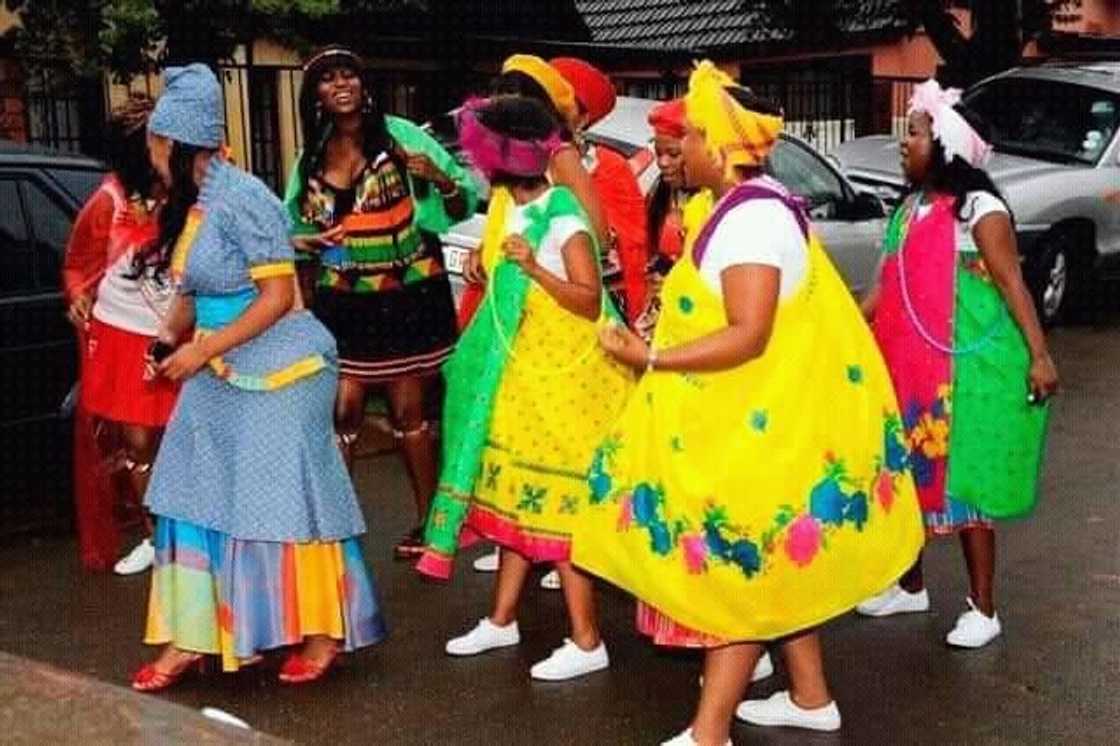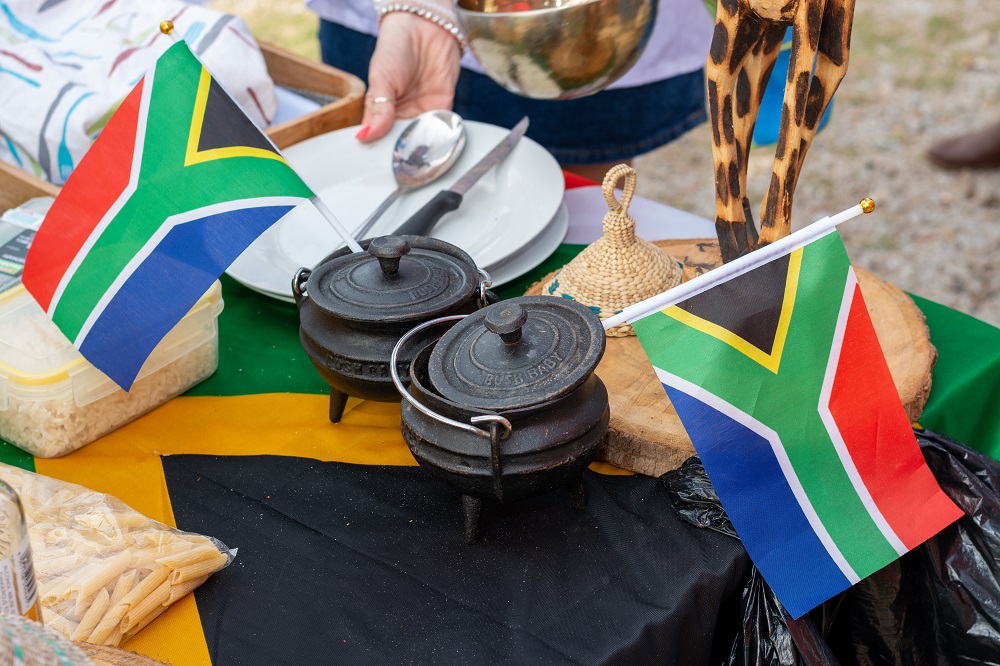Indicators on South African Culture Today You Should Know
Indicators on South African Culture Today You Should Know
Blog Article
Some Ideas on South African Culture Today You Should Know
Table of ContentsSouth African Culture Today Things To Know Before You Get ThisThe Facts About South African Culture Today UncoveredAn Unbiased View of South African Culture TodayExcitement About South African Culture TodaySouth African Culture Today Can Be Fun For AnyoneSome Known Incorrect Statements About South African Culture Today
An issue of value in Zambian villages is the passing away of loved ones. All participants of the town put money, time and effort with each other for the funeral of the deceased.Songs and dance is a very crucial element of the Zambian society. The different tribal units have their very own dancing types; however, makishi is typical amongst all people.
How South African Culture Today can Save You Time, Stress, and Money.
When it pertains to songs, drums are used the most, with a range of drumming events. In Zambia, majority of the people are Christian; Protestant and Roman Catholic. There are small groups of Muslims and Hindus, with the remainder adhering to regional native tribal beliefs.

South African heritage and society is immensely diverse, and contains various teams of individuals that each have their very own practices and beliefs. Having such a diversity of people and societies is what makes South Africa so distinct. In real feeling of the phrase, we are a rainbow country.
Making it the 7th on the list of nations with the most Portuguese people in it outside of Portugal. Portuguese is not only a society, but it is likewise a language and a race. Portuguese people stem from the nation of Portugal in Europe, however, due to Portugal (like lots of various other countries in Europe) discovering the world and dominating various other countries during the 15th 20th centuries, South Africa has what we call Portuguese South African's living in it.
South African Culture Today - Truths
Among the popular functions of the topography is a plateau that covers virtually 2 thirds of the facility of the nation. The plateau facility climbs towards the southeast, where it culminates in the Drakensberg array, component of a cliff that divides the plateau from the seaside locations. The Drakensburg consists of Sparkling wine Castle, the highest possible optimal in the nation.
The area north of the Witwatersrand, called the bushveld, inclines downward from eastern to west toward the Limpopo River, which develops the worldwide border. The western section of the plateau, the middleveld, also descends in the direction of the west and differs in altitude between the highveld and bushveld. Between the Drakensburg and the eastern and southern coastline, the land descends to the sea.
Nearer the coastline there is a low-lying plain called the eastern lowveld. Southwest of the plateau the country becomes progressively much more arid, paving the way to the stony desert of the Great Karroo, approached the east by the lower, better watered plateau of the Little Karroo. Separating the dry southern interior from the sandy coastal of the southerly coastline and West Cape is one more range, the Langeberg.
Rumored Buzz on South African Culture Today
The country's racially, ethnically, and politically divided background has actually produced nationwide and subnational symbols that still operate as symbols of the nation, and others symbols that are approved only by particular groups. The monoliths to white inhabitant conquest and political prominence, such as the Afrikaner Voortrekker ("pioneer") Monolith in Pretoria and the Rhodes Monument recognizing the British colonial empire building contractor and Cape prime priest Cecil Rhodes, continue to be sectarian signs.
The initial modern citizens were the San ("bushman") hunter-gatherers and the Khoi ("Hottentot") peoples, who rounded up livestock (South African culture today). The San may have existed for countless years and left evidence of their presence in countless old cavern paintings ("rock art"). Bantu-speaking clans that were the forefathers of the Nguni (today's amaZulu, amaXhosa, amaSwazi, and vaTsonga individuals) and Tswana-Sotho language groups (today's Batswana and Southern and Northern Basotho) migrated below eastern Africa as early as the fifteenth century

The 2 previous republics of the Orange Free State and Transvaal (South African Republic) were developed by Afrikaner inhabitants that beat and dispossessed the Basotho and Batswana. Lesotho would certainly have been by force included right into the Orange Free State without the expansion of British defense in 1869. The best marriage of the nation arised from the South African Battle (18991902) in between the British and both Afrikaner republics, which minimized the country to destroy at the beginning of the twentieth century.
Afrikaners traditionally considered themselves the just true South Africans and, while giving full citizenship to all locals of European descent, denied that status to individuals of shade up until the democratic transition of 1994. British South Africans retain a feeling of social and social connection to Great Britain without compromising their identity as South Africans.
The Ultimate Guide To South African Culture Today
The variety and fragmentation within ethnic groupings and the equilibrium of tensions in between those groups throughout the twentieth century stopped interethnic civil conflict. While intergroup stress over resources, privileges, and political dominance continue to be, those problems are as likely to match Zulu versus Zulu as Zulu against Xhosa or African versus Afrikaner.
From colonial India, British vendors and administrators brought the curved steel ornamental roofs and slim shoelace job pillars that still exemplify the outdoor patios of homes arounds and cities throughout the country. Holy places add an essential building aspect even in the tiniest informative post towns. Along with the rising steeples and classic stonework of Afrikaans Dutch Reformed churches, Anglican churches, synagogues, mosques, and Hindu shrines give variety to the spiritual building scene.

Slaughtering and the brewing of standard grain beer are essential in securing the participation and goodwill of the forefathers that are thought about the guardians of good luck, success, and wellness. Indian areas preserve their indigenous culinary customs and use them on Islamic and Hindu routine and ritualistic celebrations. Afrikaners and Coloured individuals gather at weekends and a fantastic read special celebrations at multifamily barbeques called braais, where area bonds are enhanced.
Due to the fact that this was the main economic business of both black Africans and white homesteaders, dispute between those groups fixated the possession of grazing land and livestock. In 1867, the largest diamond down payments worldwide were discovered at Kimberley in the west main area. The riches from those fields assisted fund the exploitation of the best gold coral reef in the world, which was found on the Witwatersrand in 1886.
Our South African Culture Today PDFs
This led to misunderstandings and deliberate misstatement in the dealings of white settlers and federal government officials with African chiefs throughout the early american period (South African culture today). In the facility of African gets, some elements of public and chiefly "tribal depend on" land period were preserved, and also in white backwoods, forms of common period were still practiced in more information areas with African areas
After the democratic makeover of 1994, programs for land restitution, redistribution, and reform were set up, however progression has been sluggish. The white minority still regulates eighty percent of the land. In the wake of agricultural land intrusions in Zimbabwe, the Division of Land Affairs has promised to speed up land redistribution.
Report this page